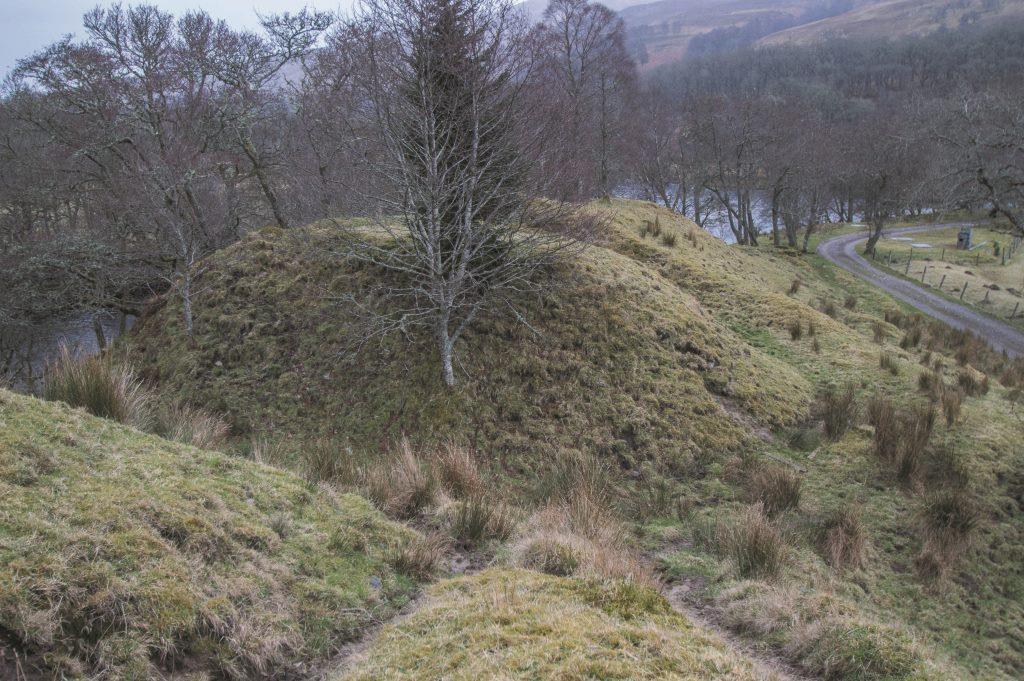Keppoch Castle

Keppoch Castle Details
Keppoch Castle, earthworks survive of castle of MacDonalds and later of Mackintoshes, demolished in 1663
- Closest To: Spean Bridge
- Access: S.O.A.C. Public Access
- Grid Reference: NN271808
Keppoch Castle occupied a ridge next to the junction of the Rivers Spean and Roy. The site is strategically important, but the earliest recorded dwelling here was only in the 16th century. There are no visible remains of the buildings other than a few overgrown footings. Access to the castle is through a working farm on foot via tracks and a climb up the earthworks.
The ridge is isolated from the high ground that the farm is on, and has probably been artificially separated in some way; it is also part surrounded by a ditch and bank at the base which probably extended the full way around. It is also divided into three platforms, the highest of which is largest and nearest the farm. To the south is an oval mound surrounded by its own ditch and bank, and beyond that is a narrow sloping section leading down to the field below. The largest platform has what appears to be a bank around the edge which probably represents the footings of a courtyard wall, and there are depressions in the ground which may be robber trenches and the site of a well.
Keppoch was held by the Macdonald clan in the 16th century, and it is likely that they had done so for some time previously. Historically part of Lochaber, if an early castle was sited here it was probably founded by the Comyns or Randolph earls of Moray as it is not immediately accessible by ship as the MacDougall castles were. However such a building was not in existence by the 16th century, and it appears likely that the “Old House of Keppoch” pulled down in 1663 was a lairds house built on the platform. This is a frustratingly short and fragmentary history, but after 1663 a new house was built elsewhere, itself burned down after Culloden; Keppoch House today is privately owned and 18th century in origin, probably built on the site of the replacement to the Old House.
Become a supporter of my work to access a more detailed history